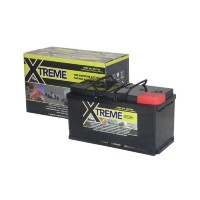Thanks for the replies guys, some really valid points to give me more to think about.
I had a really good chat with the guys at Rayne Automotive today, they build pre-wired kits with all the various components ready to go. We got into a long conversations about Lithium... their net position, if money was no object then Lithium is of course the future and the way to go...but the investment puts most off.
They fully scoped a complete solution for me 2 X 95AH AGM batteries, CTEK DC-DC, 1000w modified sinewave inverter, Victron 175w solar panel with mounting kit, 6 LED lights, couple of reading lights, extra USB sockets, EHU kit, BMV 712 monitor, all cables, RCD board, 230v sockets, switches etc... Basically full end of end system.. £1400...
It's a pretty impressive proposition and really left me wondering which way to go...
I'm lead to believe LPG hob and a diesel heater is way more cost efficient than trying to generate heat with electric. So that means our power usage is likely to only really be lights, fridge and inverter for the times we're not on EHU to charge camera batteries, laptops, iPad etc...
Their view with that sort of usage, 2 X 95AH AGM's with DC-DC and solar for support would cover us no problem... Would you disagree?
The main thing we want to avoid is having to run the engine on a site to keep our fridge and lights going... I cant imagine we'll be days on end off-grid and staying put in one location but would be nice to know we'd get away with 2-3 days if we wanted to.
I'm not adverse to spending the cash on a Lithium setup if it's going to deliver us that much more benefit but starting to wonder whether it might actually be overkill for our needs at probably way more than £1400 (haven't actually coated all those components yet)...
Would you say a fair summary?
I had a really good chat with the guys at Rayne Automotive today, they build pre-wired kits with all the various components ready to go. We got into a long conversations about Lithium... their net position, if money was no object then Lithium is of course the future and the way to go...but the investment puts most off.
They fully scoped a complete solution for me 2 X 95AH AGM batteries, CTEK DC-DC, 1000w modified sinewave inverter, Victron 175w solar panel with mounting kit, 6 LED lights, couple of reading lights, extra USB sockets, EHU kit, BMV 712 monitor, all cables, RCD board, 230v sockets, switches etc... Basically full end of end system.. £1400...
It's a pretty impressive proposition and really left me wondering which way to go...
I'm lead to believe LPG hob and a diesel heater is way more cost efficient than trying to generate heat with electric. So that means our power usage is likely to only really be lights, fridge and inverter for the times we're not on EHU to charge camera batteries, laptops, iPad etc...
Their view with that sort of usage, 2 X 95AH AGM's with DC-DC and solar for support would cover us no problem... Would you disagree?
The main thing we want to avoid is having to run the engine on a site to keep our fridge and lights going... I cant imagine we'll be days on end off-grid and staying put in one location but would be nice to know we'd get away with 2-3 days if we wanted to.
I'm not adverse to spending the cash on a Lithium setup if it's going to deliver us that much more benefit but starting to wonder whether it might actually be overkill for our needs at probably way more than £1400 (haven't actually coated all those components yet)...
Would you say a fair summary?

